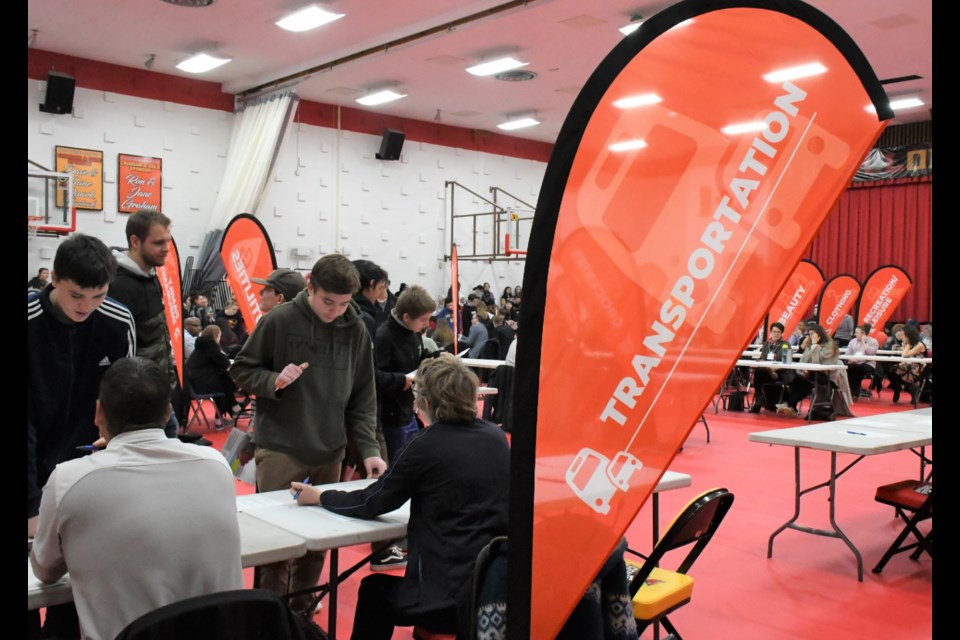Grade 9 student Douglas Cowan now has a better idea of the financial decisions his parents regularly face after being given pretend money to spend during a financial literacy event.
“My parents own, like, a lot of property. We own two houses. We were thinking about getting a third, but I don’t think we are anymore. So, like, this really helps me understand their situation,” said the Central Collegiate student. “When my parents grow I old, I still want to have rental property and I want to invest my money into rental properties, so I think this (event) is very beneficial.”
Cowan and hundreds of other students recently took part in Reality Check, a two-day event hosted by the Moose Jaw & District Chamber of Commerce and Prairie South School Division.
Grade 9 students at A.E. Peacock Collegiate experienced the joys — pains? — of being an adult on Nov. 27, while students from Riverview and Central collegiates faced similar money-related conundrums on Nov. 28.
Students were assigned one of 23 individual family scenarios and one of nine careers and had to visit booths such as housing, clothing, transportation, groceries, furniture, childcare, and charities to make virtual purchases from their monthly budget.
Although students had to visit every booth, they could make their own decisions about what to buy.
Once finished, students returned to the financial services booth to meet with an advisor. Every student received a box of Smarties, even those who had no money left in their virtual bank.
This activity was great since the booths offered an accurate picture of what students will face in the future, said Cowan, whose fictitious character was a retail associate who made $20,000 a year, was married, had one child under age five, and had no insurance.
“You’re put in different situations. And life throws different situations at you, so what you actually get might be different from what you want,” he continued.
The tough part was prioritizing wants over needs, Cowan added. He wanted a sports car, especially since his dad owns two of them, but chose a truck.
Central student Bella St-Laurent had a character who was an IT computer programmer who made $45,000 a year and was married with one child. Her biggest choices revolved around a car and house; she decided to rent a car and chose a nice dwelling.
“I think it’s kind of cool because we’re learning about how it’s going to be in the future. Like how we’re going to have to pay for things, or what insurance will do,” chuckled St-Laurent. “It’s been OK because my job’s pretty good, but choosing the things that won’t make me go really broke is kinda hard.”
Riverview student Tyrell Philipenko managed to save $11 overall, which was positive since he had to make several difficult purchasing decisions, such as housing and a vehicle. His main takeaway from the activity: “Save money,” adding, “I feel good that I didn’t spend everything.”
Volunteer Matt Gray with The Tax Team helped as an advisor and noted very few students had actually failed and spent all their money. He thought it was great that students were learning this now so they could be prepared in the future.
“The kids are doing better than adults. They are living frugally, even in this simulated world,” he said. “If they failed … (or) overspent what their means are, we can use that as a teaching moment to say, ‘Maybe it would be worthwhile to downgrade your living arrangement on a temporary basis just to get yourself in the black again.’”
Gray encouraged students who had money left over to invest it elsewhere, such as extra schooling, a vacation, retirement, or their children’s RRSP.
Since this is a game, the students could anticipate some of the issues they might face, Gray said. But if they learned that it’s not always possible to purchase a giant house right out of high school, or they should purchase an older car instead of new, then they’ve done well and learned “a little bit of reality.”




